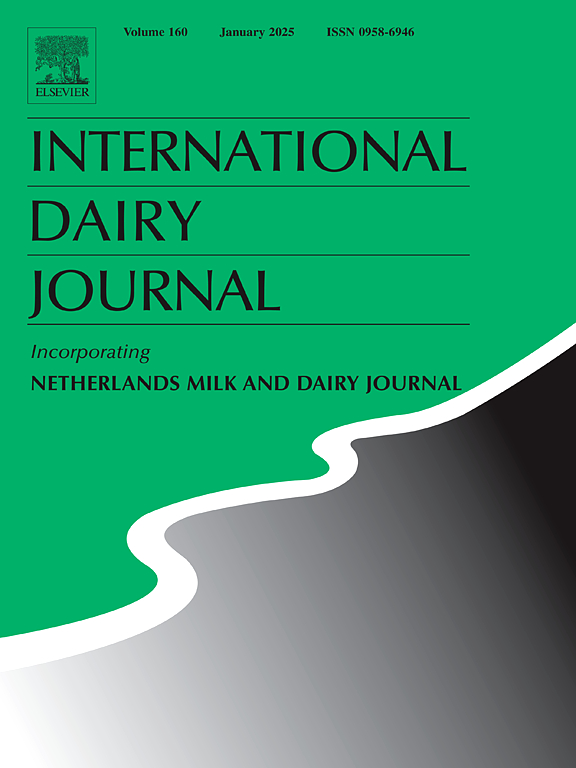The microbiome and antibiotic resistance in pasteurized camel milk
IF 3.1
3区 农林科学
Q2 FOOD SCIENCE & TECHNOLOGY
引用次数: 0
Abstract
Raw milk contains bacteria that can cause spoilage and have implications on human health. Although pasteurization is one of the main strategies employed in the dairy industry to kill these pathogens, the spore-forming bacteria are not effectively eliminated by this process. Moreover, post pasteurization, the extracellular antibiotic resistance genes (ARGs) can be transmitted to other bacteria. This study investigated the microbiome, antibiotic resistance profile, and ARGs potential transmission in pasteurized camel milk in Kuwait using shotgun sequencing. Forty pasteurized milk samples were purchased from Kuwait supermarkets and analyzed as composite samples. The results showed that spoilage and pathogenic spore-forming bacteria dominated the bacterial population of pasteurized camel milk with Bacillus and Paenibacillus constituting 40.94% and 34.27% of the population, respectively. ARGs that confer resistance to 11 classes of antibiotics mainly glycopeptide antibiotic (48.63%) and tetracycline (15.07%) were identified. Genera hosting ARGs were predicted with Paenibacillus being the most frequent genus with a mean abundance 46.8%. Moreover, the results suggested that the ARGs conferring resistance to peptide antibiotics, tetracycline, glycopeptide, and lincosamide may be transmitted to other bacteria due to their close proximity to mobile genetic elements. These findings highlight the food safety concerns associated with the consumption of pasteurized camel milk and underline the need to control the prevalence of spore-forming bacteria and extend the shelf life of pasteurized milk through the use of effective milk processing strategies.
求助全文
约1分钟内获得全文
求助全文
来源期刊

International Dairy Journal
工程技术-食品科技
CiteScore
6.50
自引率
9.70%
发文量
200
审稿时长
49 days
期刊介绍:
The International Dairy Journal publishes significant advancements in dairy science and technology in the form of research articles and critical reviews that are of relevance to the broader international dairy community. Within this scope, research on the science and technology of milk and dairy products and the nutritional and health aspects of dairy foods are included; the journal pays particular attention to applied research and its interface with the dairy industry.
The journal''s coverage includes the following, where directly applicable to dairy science and technology:
• Chemistry and physico-chemical properties of milk constituents
• Microbiology, food safety, enzymology, biotechnology
• Processing and engineering
• Emulsion science, food structure, and texture
• Raw material quality and effect on relevant products
• Flavour and off-flavour development
• Technological functionality and applications of dairy ingredients
• Sensory and consumer sciences
• Nutrition and substantiation of human health implications of milk components or dairy products
International Dairy Journal does not publish papers related to milk production, animal health and other aspects of on-farm milk production unless there is a clear relationship to dairy technology, human health or final product quality.
 求助内容:
求助内容: 应助结果提醒方式:
应助结果提醒方式:


